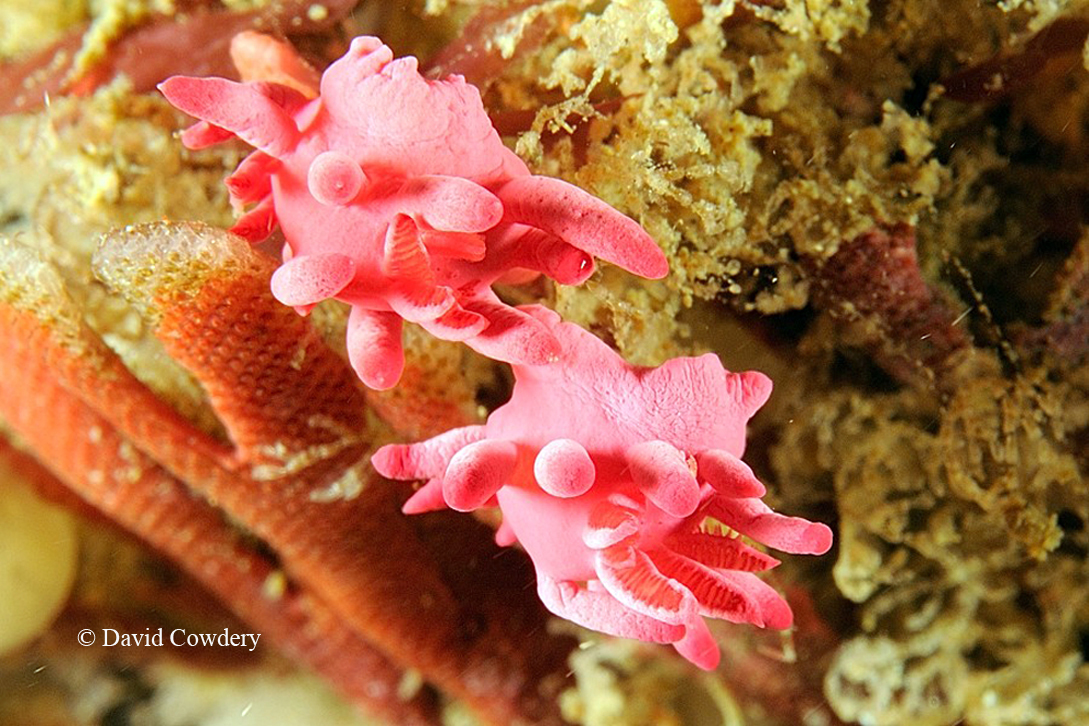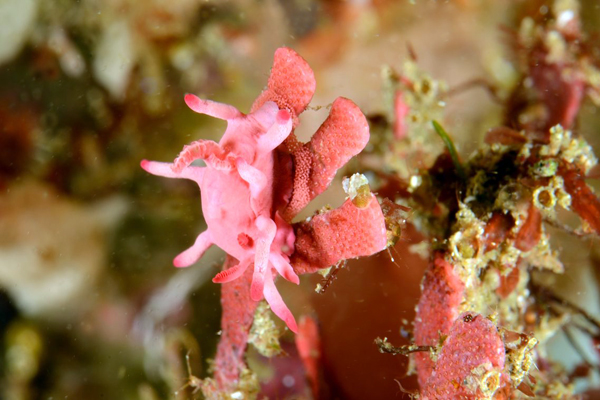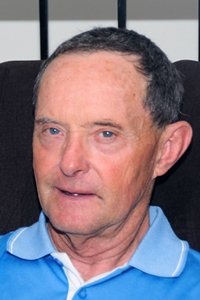 |
Okenia atkinsonorum
Image courtesy of David CowderyPhoto taken at at Byron Bay, Australia
Okenia atkinsonorum with egg mass photographed by David Cowdery Byron Bay, Australia
 |
Okenia atkinsonorum Rudman, 2007 Bill Rudman named this beauty after friends, Leanne and David Atkinson. The ending of the trivial name - "-orum" is used when a patronym honors two persons. It seems that southern Australia has three, pink Okenia's - Okenia hallucigenia and Okenia stellata . Surprisingly their geographic ranges overlap significantly. All three are bright pink, with red at the tips of the mantle processes, gills and rhinophores, but differ externally in body profile and mantle processes. O. hallucigenia differs in having a high body profile and a distinct and separate oral veil. O. stellata has red lines on the mantle, lacking in the other two species. Internal anatomical features separate the species further. All three species feed on the bryozoan Pleurotoichus clathratus. This species is occurs from New South Wales to southeastern Australia and in northern New Zealand. References: Rudman, W. B. (2004) Further species of the opisthobranch genus Okenia (Nudibranchia: Goniodorididae) from the Indo-West Pacific. Zootaxa, 695, 1-70. Rudman, W.B. (2007) Two new species of Okenia (Gastropoda: Nudibranchia: Goniodorididae) from eastern Australia and Tanzania. Zootaxa, 1657: 57-67.
|
Sammamish, WA 98074
Dec., 2014
Send Dave email at davidwbehrens@gmail.com
David Cowdery

Dave Cowdery is a retired biomedical engineer and Divemaster at Byron Bay Australia. He has over 5000 logged dives. He is a keen participant in trips organised by Graham Abbott at Diving4Images and has dived the tropics extensively from Cocos Keeling Islands east to Niue. 3 Camera equipment used Nikon D300 in Ikelite Housing with twin 125 substrobes and a 60mm Nikon macro lens. Dave has additional observations on our subject for this week Okenia atkinsonorum feeds on the bryozoan Pleurotoichus clathratus at Port Stephens (just north of Sydney Australia. The images in Colemans encyclopedia show this behaviour clearly and is also reported by Rudman. At Byron Bay (Australia's most easterly point and several hundred miles further north from Port Stephens). The behaviour is similar but the animals are sometimes seen on the red seaweed Delisea pulchra. This is usually at a depth of 8-10 meters.
Send Dave mail at divec@ozemail.com.au
|

|
